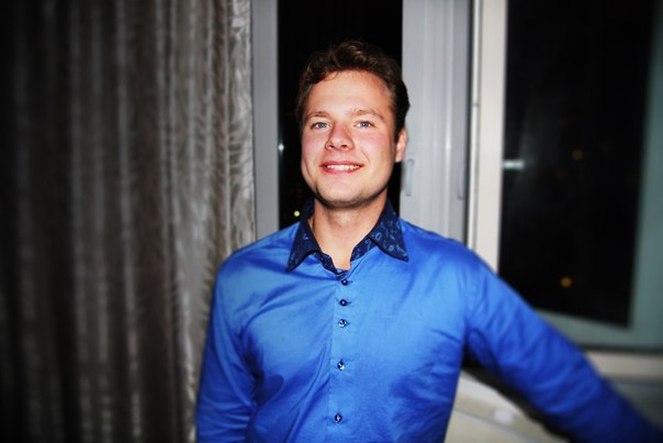INTERVIEW: Henri Puttonen
Hampakompaniet/Sweden
Henri Puttonen is the initiator of “Hemp for Green Industrial Revolution,” a crowdfunding campaign on fundedbyme.com aimed at encouraging more growth of hemp in Europe, which, in his opinion, may only happen once Europeans start premiering hemp textiles. Henri is the marketing director of Hampakompaniet – a Sweden-based hemp textile distributor.
Q: Less than 20,000 ha were grown in hemp in 2014. Certainly Europe consumes much more than that, if you consider European automakers are using approximately that amount. How does the European market look in terms of demand for hemp fibres?
Henri Puttonen: As can be seen from the annual report written by EIHA, the main markets for hemp fibre in Europe today are specialty cellulose (for paper production), insulation products (mainly small housing) and biocomposites (mixed with plastics to make a sturdier material). Comparing this information to the annual report from Directorate-General for Agriculture and Rural Development, one will notice that hemp cultivation in Europe experienced a sharp decline between 2009-2011 – from 14,600 to 8,000 hectares under cultivation, after which official statistics collection stopped.
Q: Where do you source the hemp fibre used by Hampakompaniet? What are the factors that go into your decision making regarding your hemp suppliers? How do you select them?
HP: After receiving no answers from several dozen European companies I contacted regarding procurement of hemp yarn and fabric, I decided to buy it from China, the world leader in hemp textiles. Choosing a supplier today is very easy – you have very few suppliers to choose from, and all are Chinese. The demand from European industry is there, the supply is simply not. Why? It is too expensive to produce hemp today. Too few organizations are willing to pay more than they are already paying for equivalent raw materials, and they want in fact to pay even less. I know of several well-known multinational corporations that are interested in hemp, but the price for raw materials is simply too high. Some might say it is a problem, but for Hampakompaniet this is a great opportunity for innovation in the industry.
Q: What would you say are the key opportunities to drive more hemp farming and processing in Europe?
HP: While hemp shiv will be most valued in hempcrete, as it creates probably the greatest value for the shiv, it also gives a good price to the farmer. On the basis of shiv sales to hempcrete construction, one could already start building the cultivation of hemp. It would be wonderful if all regions in Europe would have their local hempcrete builders and I really wish everyone working in this direction all the best in developing it further – quicker, faster, stronger.
While hemp shiv will be most value in hempcrete, the fashion, interior and technical textile markets are the ones that could in a short time swallow immense amounts of hemp fibre, should the price be right. As noted before, the technical textile market is struggling. Hampakompaniet’s mission will therefore be to try something new – to develop the fashion and interior textiles side of the industry, by motivating Europeans to buy hemp textiles and offering the most attractive hemp textiles on the market: stylish and affordable. Our start is humble – finest hemp t-shirts on the European market, manufactured in Europe, for the best price available.
Q: Aren’t hemp-fibre-derived materials much more expensive than those made of other materials?
HP: They are right now. However, this will change shortly after millions of Europeans start buying hemp textiles, as the potential for hemp cultivation in Europe by far outweighs both flax and cotton. Any good novation will always find people who are ready to pay the premium, which is where one must start – to find the right niche. Combine the right niche with hard work, constant lowering of costs while retaining quality, and you will eventually reach mainstream.
Most people simply do not know that hemp, also known as cannabis sativa, is Europe’s most important textile raw material. Most organizations are afraid to associate themselves with cannabis in any way and this is where Hampakompaniet goes against the current – we build our image on the basis of championing cannabis sativa as the main raw material for Europe’s textile industry. Our team consists of hardworking, competent, creative and law-abiding people, and we have therefore no fear in regards to playing our part in the creation of the great future held in store for cannabis in Europe. We’re pushing forward, regardless of any difficulties.
Q: How does it look in China for hemp growing and processing?
HP: The Chinese army actively supports hemp cultivation and processing, I think that should explain all.
Q: You still have 38 of 45 days left on your Funded By Me project. How much money are you trying to raise, and when’s the deadline? How’s the campaign going?
HP: Several organisations have already shown interest in long-term, scalable cooperation and we wish to find more partners to work with. The aim is to raise Euro 42,200 by March 19. I would very much appreciate any and all help I could get and encourage everyone reading this article to become acquainted with the campaign.

